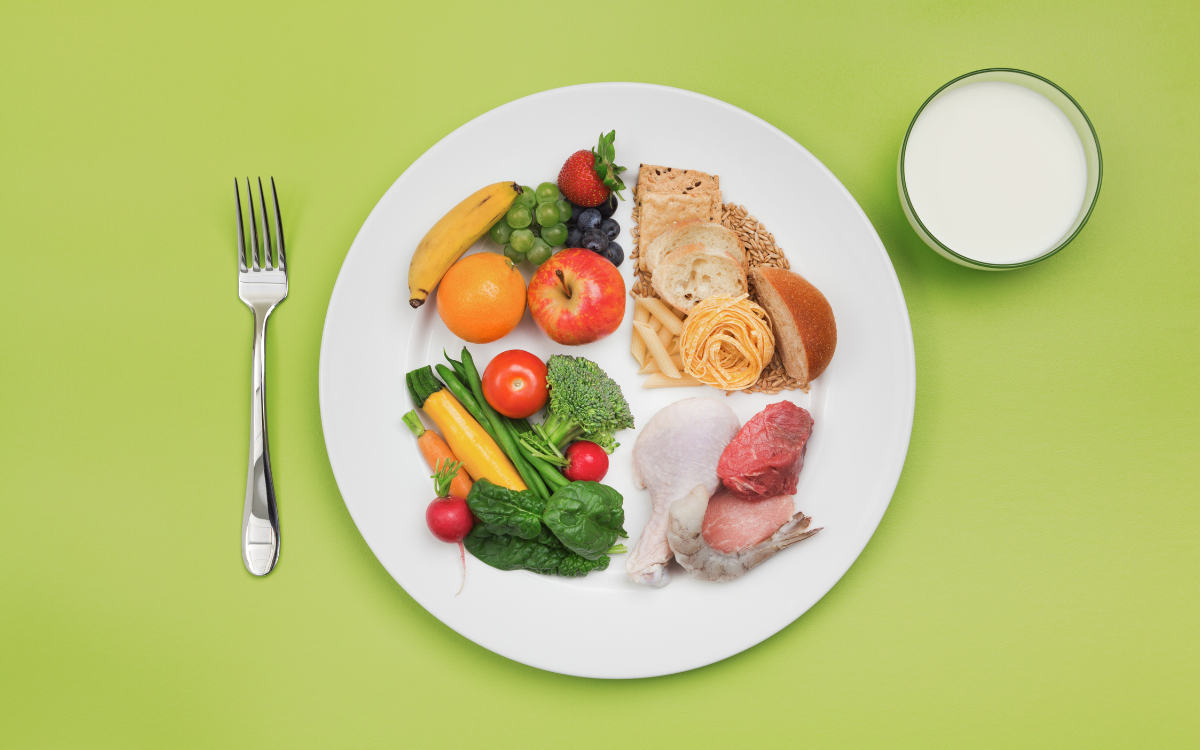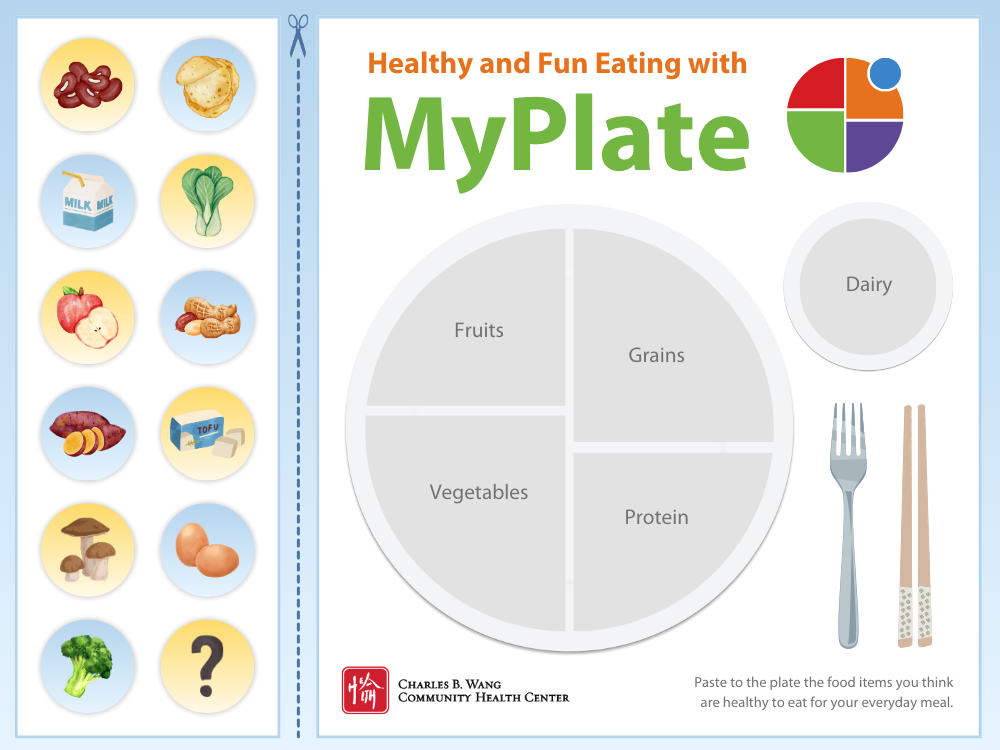A Parent's Guide to Healthy Eating for Kids
Clinically reviewed by Kathleen Phung, MD

Building healthy habits early plays an important role in your child’s growth, energy, and overall well-being. With so many food choices and busy schedules, however, providing nutritious meals can become a challenge. If you are packing school lunches, nurturing picky eaters, or just looking for simple and balanced meals for your kids to enjoy, this guide will explore practical, family-friendly tips to make healthy eating for kids a natural and enjoyable part of everyday life.
Why Nutrition in Early Childhood Matters
The early years of a child’s life involve rapid development, both physically and mentally. Their bodies are building strong bones, muscles, and immune systems, while their brains are developing critical skills like memory, attention, and emotional regulation. What they eat during this time can have an impact on how well they grow and learn.
As the body and brain grow during early childhood, they rely on a steady supply of essential nutrients like protein, healthy fats, vitamins, and minerals. When children do not get enough key nutrients, they may begin to experience issues such as feeling more tired than usual and having trouble focusing.1
In addition to supporting children’s day-to-day growth, a nutritious diet also helps protect them from health problems later in life. Research has found that good nutrition early on can help establish healthy dietary patterns, laying the foundation for lifelong health and preventing the future development of diseases.2 Furthermore, children who are introduced to a variety of whole foods, including fruits, vegetables, whole grains, lean proteins, and dairy or plant-based calcium sources, are more likely to maintain balanced eating patterns as they grow. Positive food experiences in these formative years can also help kids develop a healthy relationship with food, making mealtimes more enjoyable and less stressful for everyone.
What to Feed Your Children for Healthy Growth
To meet the demands of early growth and activity, children need a diverse range of nutrients that serve unique purposes respectively. From providing energy to building strong bones and supporting digestive health, these nutrients work together to support children’s everyday performance while promoting healthy development.
Foods That Help Kids Stay Energized and Focused
The right nutrition can affect how children feel and perform, whether at school or during leisure time. Healthy food does more than just fill them up; it also helps fuel the brain, keep blood sugar steady, and support long-term cognitive development.
Start with slow-burning carbohydrates like whole grains, oats, and sweet potatoes. These give kids a steady stream of energy without the blood sugar spikes and crashes that come from sugary snacks or white bread. Protein foods, such as eggs, yogurt, or nuts, help stabilize that energy and keep hunger away. Healthy fats, especially omega-3 from foods like fish or walnuts, are essential for brain development and focus.
Micronutrients play a critical role, too. Iron helps produce muscle cells and red blood cells that carry oxygen through the body.3 Low iron levels can lead to iron deficiency anemia, causing fatigue and trouble concentrating. B vitamins support the body's ability to turn food into energy, and magnesium helps regulate mood and attention. These nutrients are commonly found in leafy greens, beans, eggs, and whole grains.
Foods That Build Strong Bones and Teeth
Bones and teeth provide structural support as bodies grow rapidly during childhood. One of the most important nutrients for these structures to develop properly and stay strong is calcium. About 99% of total body calcium is stored in teeth and bones.4 As dynamic living tissues, bones and teeth need support during development. Research has found that a person’s bone mass is accrued primarily before they reach age 20.5 With enough calcium in their diet, children’s bones can grow denser, reducing the risk of injuries and conditions like osteoporosis later in life. Calcium plays a similar role in teeth as it helps form enamel, the outer layer of the tooth that protects against decay and cavity.
But calcium does not work alone. Vitamin D is essential because it helps the body absorb calcium from food. Without enough vitamin D, a calcium-rich diet might not fully benefit your child’s bones. Magnesium and phosphorus also play key roles in bone formation and maintenance.
To support both bone and dental health, aim to include calcium-rich foods in your child’s meals every day. Dairy products such as milk, cheese, and yogurt are some of the most efficient sources of both calcium and vitamin D. For children who are lactose intolerant, fortified plant-based milk, such as almond, soy, or oat milk, can be excellent alternatives. You may check the label to make sure they contain added calcium and vitamin D. Certain beans, tofu, and leafy greens such as kale, bok choy, and spinach are also rich in calcium and other essential minerals to support skeletal growth. Eating these foods regularly can give your child a strong foundation.
Foods That Keep the Digestive System Moving
A healthy digestive system does more than just process food. When the digestive system is working well, it helps your child absorb nutrients and keeps them feeling comfortable. The key to smooth digestion is fiber and hydration.
Dietary fiber is a special component of food that your body cannot fully digest. It helps food move through your body and regulates bowel movements.6 You can find fiber in fruits like apples and bananas, vegetables like broccoli and sweet potatoes, and whole grains like brown rice and oats. Beans, lentils, and seeds like chia and flax also add fiber to your meals in a fun and tasty way.
Encourage children to drink water in small sips throughout the day as fiber works best when there is also enough water. Without fluids, fiber can slow down digestion instead of helping it. Water helps soften stools, support regular bowel movements, and carry nutrients through the body. While water-rich fruits like watermelon and oranges can contribute to hydration, too much fruit, especially when served as juice, can lead to excess sugar and digestive upset. For children ages 2-13, aim for 1-2 cups of fruit per day as part of a balanced diet.
How A Parent Can Support Healthy Eating in Family Meals
Eating well does not mean you have to buy expensive foods or cook complicated meals. Young children don’t need trendy “superfoods” or fad diets to stay healthy. What they really need is a variety of familiar, everyday foods that give them energy, help them grow strong, and support their ability to learn and play. Small changes to everyday meals can often add up to better health without extra time or stress. For busy families, especially those adjusting to new food systems or schedules, some simple swaps and a flexible approach can make meals more nutritious while still being familiar and affordable. With these small adjustments, families can eat well in a way that works for their culture, budget, and busy lives.
Remember, healthy eating is not about perfection or forcing changes overnight. It is about making the most of what is available and building habits that support long-term health.
Simple Swaps That Make a Big Difference
Many everyday foods and snacks are convenient but also come with excess salt, sugar, or fats. These can be part of a child's diet occasionally, but with a few simple swaps, families can create healthier versions of meals that children already know and enjoy.
For example, while instant noodles can be a quick fix and an occasional treat, many are deep-fried and high in saturated fats. The seasoning packets in instant noodles are often high in sodium, which can lead to many health problems including high blood pressure. Making your own broth with plain noodles like soba or pasta can lower the sodium and fat content while providing better nutritional values such as fiber and protein. Consider adding an egg or some vegetables to make your noodles more nutritious.
If your family eats a lot of white rice, try mixing in brown rice, lentils, or quinoa for similar benefits. You may also gradually introduce other whole grains, such as whole wheat bread and tortillas to keep children fuller for longer. To cut down on salt in everyday cooking, try using natural seasonings like garlic, herbs, or a drop of vinegar instead.
If your child is looking for a treat, try swapping chips and cookies with fresh fruit, bite-sized vegetables, unsweetened yogurt or unsalted nuts. These provide important nutrients and keep kids feeling full between meals without extra sugar or unhealthy fats.
What children drink matters too. Water is the best choice to stay hydrated as it does not come with excess sugar like fruit juices and sports drinks. Milk is another great option as it provides calcium and protein. Just keep in mind that too much milk can reduce a child’s appetite for iron-rich foods like meat, beans, or leafy greens. Limiting milk to about 2 cups (500 ml) a day helps keep a good balance and supports healthy eating.
Smart Food Tips for Picky Eaters
For families with picky eaters, it helps to offer new foods alongside familiar favorites. Children may need to see a food several times before they are ready to taste it, and that is okay. Serve small portions of new ingredients alongside foods they already like, without pressure to eat everything. For example, add a few lentils to rice or mix vegetables into eggs. Encouraging children to pick vegetables at the grocery store or letting them rinse or stir something while cooking can also help build interest. It is the routine that matters more than any single meal. Over time, regular exposure builds comfort and curiosity.
Another helpful tool is MyPlate, a simple yet fun visual that shows what a balanced meal should look like.7 It divides the plate into five key food groups: fruits, vegetables, grains, protein, and dairy. Using this model as a guide can make it easier for parents to explain healthy eating to your child, explore new foods with them, and plan family meals together.

When to Ask for Help
As a parent, it is natural to have questions or concerns about your child’s eating habits. While picky eating or occasional food battles are common, it is okay to check in with a doctor to seek help for your child’s health and well-being.
You may want to ask for help if you notice:
- Consistent refusal to eat entire food groups (like fruits, vegetables, or proteins)
- Constant fatigue or slow growth compared to typical milestones
- Frequent digestive issues, such as stomachaches, constipation, or diarrhea
- Behavioral signs tied to food, such as anxiety or emotional eating
At the Charles B. Wang Community Health Center, we’re here to support you. Whether you need a simple blood test to check for anemia or resources for affordable, health foods, our pediatrics team can help you find solutions that work for your family. Healthy eating is a journey, and you do not have to walk through it alone.
FAQs:
1. How can I get my child to drink less soda or drinks with added sugars?
Try to keep sugary drinks out of sight. Instead, offer water with fruit slices for fun. If your child is used to soda or drinks with lots of added sugars, cut back slowly by mix in water or switch to smaller portions. Setting the example yourself also helps a lot.
2. Are school lunches healthy?
Many schools aim to follow national nutrition guidelines, but it varies. Talk to your child about what and how they eat at school. If you are concerned, consider packing some simple, healthy snacks or talking with school staff about healthier choices.
3. What if I can't afford fresh, healthy food all the time?
Healthy eating on a budget can be tough, but many frozen and canned options are just as nutritious. Learn to read food labels and look for foods with less to no sodium, sugar, or preservatives. For more food security resources, you can also reach out to your local food aid programs or community health center.
Sources
- https://www.mayoclinic.org/healthy-lifestyle/childrens-health/in-depth/iron-deficiency/art-20045634
- https://pmc.ncbi.nlm.nih.gov/articles/PMC10377795/
- https://www.cdc.gov/infant-toddler-nutrition/vitamins-minerals/iron.html
- https://www.ncbi.nlm.nih.gov/books/NBK109827/
- https://doi.org/10.1016/j.jposna.2024.100031
- https://www.mayoclinic.org/healthy-lifestyle/nutrition-and-healthy-eating/in-depth/fiber/art-20043983
- https://www.myplate.gov/
Heading
Lorem ipsum dolor sit amet, consectetur adipiscing elit. Suspendisse varius enim in eros elementum tristique. Duis cursus, mi quis viverra ornare, eros dolor interdum nulla, ut commodo diam libero vitae erat.


Heading
Lorem ipsum dolor sit amet, consectetur adipiscing elit. Suspendisse varius enim in eros elementum tristique. Duis cursus, mi quis viverra ornare, eros dolor interdum nulla, ut commodo diam libero vitae erat.
The Charles B. Wang Community Health Center is a nonprofit and federally qualified health center offering comprehensive primary care services to all in six convenient locations in Manhattan and Queens seven days a week.








